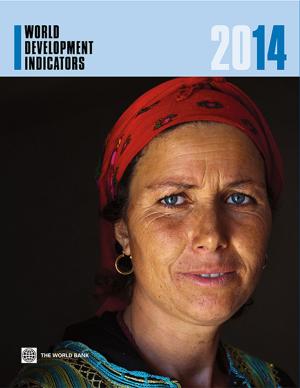Debt Relief And Beyond: Lessons Learned And Challenges Ahead
Business & Finance, Economics, Economic Development| Author: | Primo Braga Carlos A.; Doemeland Doerte | ISBN: | 9780821378748 |
| Publisher: | World Bank | Publication: | October 6, 2009 |
| Imprint: | Language: | English |
| Author: | Primo Braga Carlos A.; Doemeland Doerte |
| ISBN: | 9780821378748 |
| Publisher: | World Bank |
| Publication: | October 6, 2009 |
| Imprint: | |
| Language: | English |
The history of debt relief goes back several decades. It reveals that a country's accumulation of unsustainable debt stems from such factors as deficiencies in macroeconomic management, adverse terms-of-trade shocks, and poor governance. Debt-relief initiatives have provided debt-burdened countries with the opportunity for a fresh start, but whether the benefits of debt relief can be preserved depends on transformations in a country's policies and institutions.In 1996, the Heavily Indebted Poor Countries (HIPC) Initiative was launched as the first comprehensive, multilateral, debt-relief framework for low-income countries. In 2005, the Multilateral Debt Relief Initiative was established, which increased the level of debt relief provided to HIPCs. As of early 2009, assistance through these two initiatives had been committed to 35 countries and amounted to US117 billion in nominal terms, or half of the 2007 GDP of these countries.Debt Relief and Beyond assesses the implications of debt relief for low-income countries and how its benefits can be preserved and used to fight poverty. The chapter authors bring unique operational experience to their examination of debt relief, debt sustainability, and debt management. Several key questions are addressed, including:What consequences does debt relief have for poverty-reducing expenditures, growth, and access to finance? Can debt relief guarantee debt sustainability? How can debt management at all levels of government be improved? What lessons can be learned from countries that have experienced debt restructuring? Finally, this book provides sound empirical evidence using current econometric techniques.
The history of debt relief goes back several decades. It reveals that a country's accumulation of unsustainable debt stems from such factors as deficiencies in macroeconomic management, adverse terms-of-trade shocks, and poor governance. Debt-relief initiatives have provided debt-burdened countries with the opportunity for a fresh start, but whether the benefits of debt relief can be preserved depends on transformations in a country's policies and institutions.In 1996, the Heavily Indebted Poor Countries (HIPC) Initiative was launched as the first comprehensive, multilateral, debt-relief framework for low-income countries. In 2005, the Multilateral Debt Relief Initiative was established, which increased the level of debt relief provided to HIPCs. As of early 2009, assistance through these two initiatives had been committed to 35 countries and amounted to US117 billion in nominal terms, or half of the 2007 GDP of these countries.Debt Relief and Beyond assesses the implications of debt relief for low-income countries and how its benefits can be preserved and used to fight poverty. The chapter authors bring unique operational experience to their examination of debt relief, debt sustainability, and debt management. Several key questions are addressed, including:What consequences does debt relief have for poverty-reducing expenditures, growth, and access to finance? Can debt relief guarantee debt sustainability? How can debt management at all levels of government be improved? What lessons can be learned from countries that have experienced debt restructuring? Finally, this book provides sound empirical evidence using current econometric techniques.















